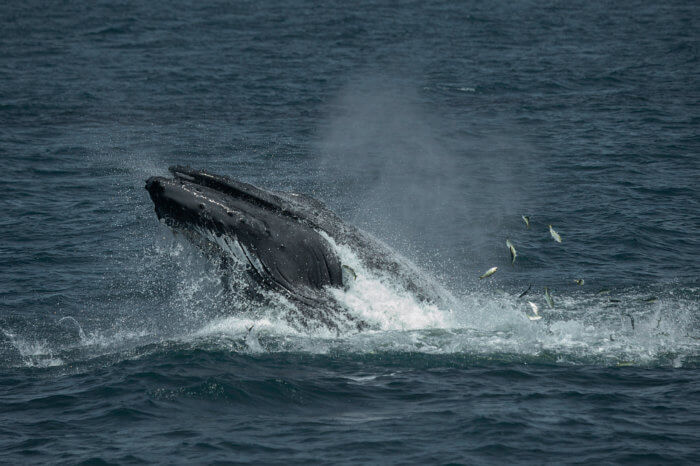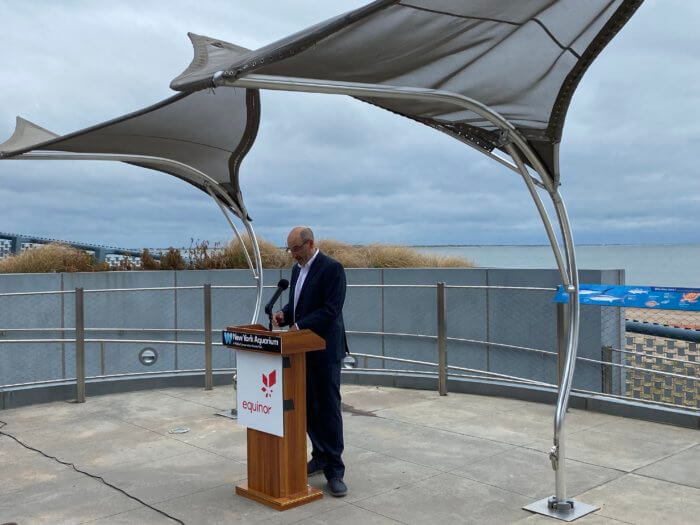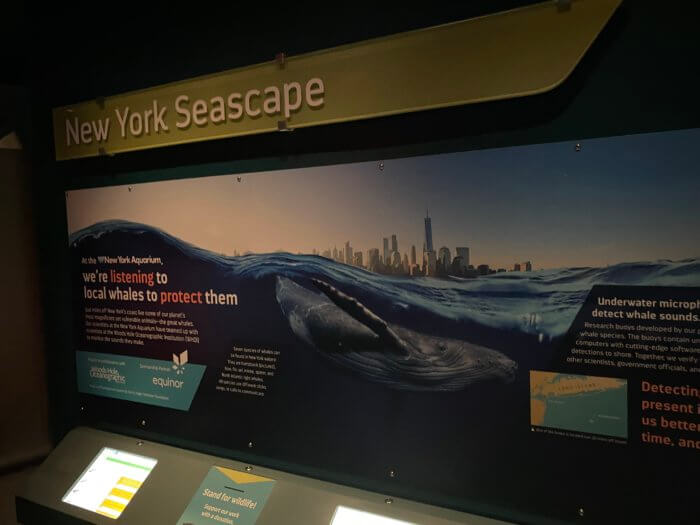The Wildlife Conservation Society is extending its ocean life observation program, which monitors various whale species and activity within the New York Bight and enables the public to hear the activity of the ocean giants in near real time at the New York Aquarium on Coney Island.
The expansion — announced by WCS and partners of the New York Aquarium on Thursday — will come in addition to WCS’ first push to help track and protect New York’s whales, the Ocean Giants Program. Since the program was launched in 2019 with Empire Wind, two acoustic monitoring buoys off the coast have already collected more than 2,000 days worth of data and detected more than 18,000 whale sounds within New York waters.

WCS, a nonprofit wildlife organization headquartered at the Bronx Zoo, and their conservation partner — Equinor, the Norwegian energy company behind the South Brooklyn Marine Terminal’s coming wind turbine assembly plant — hope the program expansion will continue to help bridge the gap between marine life and the general public.
According to Dr. Howard Rosenbaum, lead scientist and director of the Ocean Giants Program, data from that first study has already brought needed attention to the animals right off the coast of New York — and detected four known species of whales in local waters. By increasing their observation, Rosenbaum said, New Yorkers will be more informed on how their lifestyle impacts ocean life.
“Having this data readily available will help guide decision-making and best practices for off-shore wind development and other human activities in the New York bight,” Rosenbaum said on the rooftop of the southern Brooklyn aquarium. “From our work we have shown that these whales spend more time in and migrate through these waters, certainly more than we previously thought.”

The monitoring program will now continue until 2028, after Empire Wind, a new offshore wind energy project, is in operation. The expanded timeline will allow scientists to track whale activity and behaviors before, during, and after construction.
Scott Lundin, head of U.S. permitting and environmental affairs at Equinor, said the buoys help the public better understand whale migration patterns — and that the amount of wildlife already detected only emphasizes the program’s importance.
After looking at their findings, scientists at WCS then share the information with Equinor to discuss what actions or policies should be implemented to better care for the animals. Realtime detections are then sent to the New York Aquarium, allowing the public to learn about the whales in their own backyard at an interactive kiosk.
“We are learning so much and we will keep monitoring the Empire Wind lease area and the wider New York Seascape for any new and important findings on the most iconic and endangered whales on the planet,” said Rosenbaum.
The lead scientist said the four whale species found so far are the Sei, Fin, Humpback and an especially endangered North Atlantic Whale, a species that has less than 350 individuals existing today.

The work of the conservation society will operate in tandem with the offshore wind energy project, using data about whales in the New York Bight.
A competitive solicitation was issued by NYSERDA to create at least 2,000 additional megawatts of offshore wind energy for New Yorkers and meet New York’s renewable energy target.
Rosenbaum believes the increased offshore wind development is a vital renewable energy source and the two programs are eager to work together.
“Offshore wind developers are poised to be catalysts for positive change in the eyes of New York, the federal government and our wider civil society,” he said. “America is watching us as major offshore wind projects take shape off the eastern seaboard.”















